What connection in ancient Greece linked the Hyperborean cult of Apollo, the symbolism of the swan and migratory birds, the Mysteries of Eleusis and Thracian and Eurasian shamanism? Extract from the third chapter of The Angel of the Abyss. Apollo, Avalon, the Polar Myth and the Apocalypse (Axis Mundi Editions, 2022).
di Marco Maculotti
TAKEN FROM THE ANGEL OF THE ABYSS.
APOLLO, AVALON, THE POLAR MYTH AND THE APOCALYPSE, POSTAL CODE. III §1
(AXIS MUNDI EDITIONS, 2022)
cover:
Wilhelm List, Apollo Charming the Swans
We have already underlined [chap. II §§3-5] as Ortigia is literally the "Isle of Quails" (ortyx = "Quail") and we know that the latter in the Hellenic tradition symbolized the dawn and spring, similarly to the swan and the goose [1]. The birds, especially the migratory and aquatic ones that add up to themselves a triple nature (aerial / terrestrial / watery) covered a certain importance in the sacral vision of the Greeks, to the point that Karoly Kerenyi he came to identify two triads of birds particularly recurrent in vase painting, formed respectively by "Swan / goose / duck" and "Stork / heron / crane" [2]. The second group appears to have been related mainly to Pelasgian populations (pelargos = "Stork") of navigators who, according to Evola's analysis [3], were to be considered Atlantic, while the first group is to be ascribed to the symbolism of the Indo-European (semi) nomadic lineages, i.e. coming from the steppes North Asian.
Philippe Walter, analyzing the mythical and symbolic role of the swan and other migratory birds functionally homologous to it, underlines how it is necessary to remember that «the swan is often assimilated to the goose (wild) or the crane, migratory animals. Now, every migration presupposes time cycles, because the migratory bird appears and disappears at specific seasons of the year. These back and forth [...] between the human world and the Hereafter therefore build the cosmic rhythm of the myth " [4]. The swan is, as is well known, the Apollonian bird par excellence, which the god periodically uses as a mount to go "in flight" to the sacred land of Hyperborea [5]. In addition, it was considered throughout the Indo-European ecumene (Vedic, Iranian-Avestan, Germanic, Celtic, Slavic, etc. [6]) imāgo of the auroral purity of the origins: in the Hindu tradition the "transcendent men" of the Satya-Yuga - the golden age of the beginnings whose name can be translated as "Age of Truth", "Age of Fullness", "Age of Being" and "Age of Purity" (all concepts conveyed by the radical * SAT which is also traceable in the Latin tradition of Saturnus of the Golden Age) - are named Hamsa, literally "swans", "geese" or "wild ducks" [7].

The Greeks attributed to the Thrace the reputation of "Home of the swans" and this in the discourse that we have started is highly significant, since we have seen how many of the iatromancers devoted to Apollo most celebrated by classical authors - as well as a good part of the daimones oracular that once kidnapped to our world, took the place of the Hyperborean god from the respective hypogeal seat in which they were disappeared - they came precisely from that region: suffice it to mention by way of example Orpheus, Zalmoxis, Reso, Olen… Some Athenian families of aristoi (i.e. aristocrats in the classical sense of the term) boasted an ancient relationship with a Thracian king whose name, Oloros, literally translated as "Swan" [8].
To what has been said we must add a highly significant myth for a series of mythopoeic and symbolic elements that we will adequately rattle off later. [9] concerning the Polar Myth and the sacred northernmost land. This myth conveys that Eumolpus - first legendary hierophant of the sanctuary of Eleusis, also a native of Thrace, who in a classic vase painting appears together with Poseidon and with a swan at his feet - was the son of the god of the seas [10] and of Chione, the "Nivea", goddess of the snows in turn, offspring of Borea, the northern wind, and of the Nymph Orizia [11] (Oreithyia = "She who rages on the mountains", a bacchanal name [12]) which he kidnapped from the Ilisso river in Athens. This watercourse bears a very strong Apollonian value, as it was known by the ancients as a "stage" for the archaics Mysteries of Agrai [13], because on its banks the Hyperborean god was venerated inside an underground sanctuary obtained from a natural cavity, the foundation of which was so ancient as to anticipate that of the Acropolis itself, located south of the underground temple.
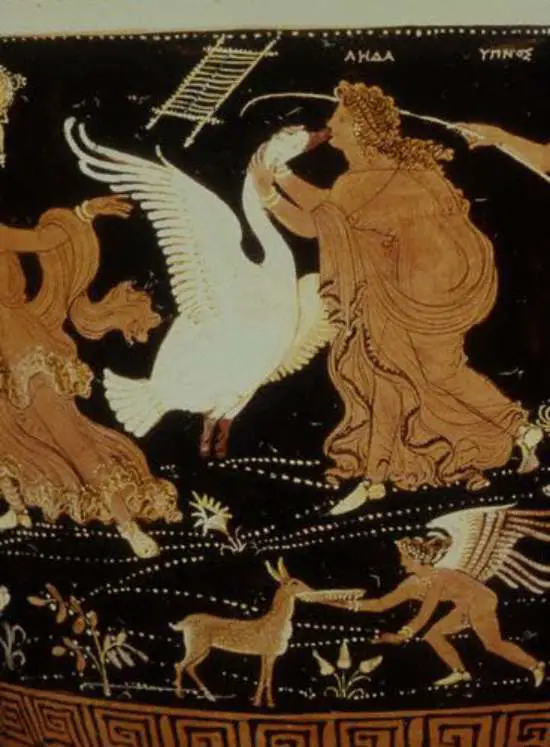
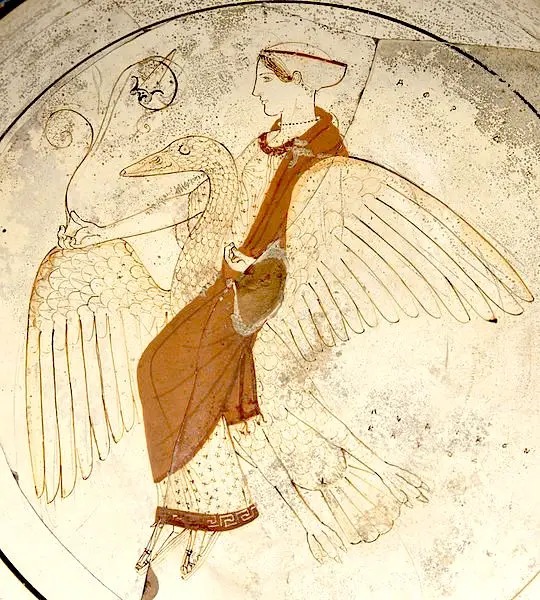
Very little is known about these Mysteries, but it seems that they were strongly connected with the Mysteries of Eleusis, which is moreover consistent with the sacral function that Eumolpus held there, namely that of "revealer of sacred things". Kerényi attests that the etymology of the name derives from eumolpos, "Good singer": the dynasty of the Eumolpids, then, was certainly part of the milieu iatromantic formed by hierophants and aedi inspired by the Hyperborean god, "because all those who led the secret ceremonies on sacred nights must have been able to sing well" [14]. As we have already seen for Orpheus and Zalmoxis [15], Eumolpus too must have been in ancient times not a personal name but rather "a venerable title that the priest of the mysteries assumed together with his office, during which he renounced the name: he threw his old name into the sea, in the depth of which he stood, in a special report, that first Eumolpus of Thrace " [16].
We find in the whole myth of Eumolpus an oddity that one cannot help but notice: a very clear-cut, even cumbersome ocean presence within his biography. Son of Poseidon, he was saved by him from drowning after his mother Chione had thrown him into the sea. Brought to Ethiopia - not the African one, but one of the many mythical and paradisiacal lands that the Greek tradition knew, located "in the kingdom of water" [17] - there he is raised by Bentesicime ("the one who lingers in the depths of the sea") and marries one of his daughters. It would therefore seem that in their most remote origin the Eleusinian Mysteries revealed on the one hand an important and decisive component far north (let's not forget that Eumolpus is the grandson of Boreas), most likely North Asian and North Caucasian, and on the other a oceanic, which however in the archaic meaning of the term with reference to Okeanos takes on a mystical value, equivalent to saying "at the edge of the world".
Kerényi talking to us about the myth of Eumolpo informs us that the events are taking place "Deep in the sea, in an underground world" [18], therefore in one of those places out of space and time as are traditionally the Isole dei Beati, located "Near Okeanos with great whirlpools". But that's not all, because we find this again ocean brand also in another Thracian legend [19] which is attributed to his character, who exhibits absolutely incontrovertible symbols and suggestions, which will serve us as an introduction to what we are going to dissect throughout this chapter. Kerényi writes:
"They told of a lake, Eschatiotis, "The lake of the extreme end", which extended beyond the Isthmus, in which many soldiers of Eumolpo, with whom he had helped the Eleusinians in the war against the Athenians, had disappeared while taking a bath. "
[20]

In this mythical account the ocean is replaced by a lake, but the symbolism oceanic does not change, as:
A) it is said that it extended "beyond the Isthmus", a detail that makes it homologous to the ocean outside the more famous Pillars of Hercules of the Greek myth;
B) according to the legend, Eumolpus' traveling companions, "navigated" soldiers who had waged war against the Athenians, would have "disappeared while taking a bath": here is the spy who informs us that we are in an incomprehensible, indecipherable, terrifying, alien territory , otherworldly ... Totally Other, and therefore sacred;
C) Kerényi adds another extremely interesting fact, asserting that "the tragic end of this story was not narrated and the narrators also kept silent about the transformation of Eumolpus into a bird", more precisely in swan [21] (let's remember the above vase painting); in other words, his soldiers would disappear in the whirlpools of the "lake of the extreme end" and he alone would be saved by turning into a swan and flying away, thus reaching the Other World (the Regnum Apollonis) in the form of a winged creature, that is to say "in spirit".
D) above all, this place is referred to with the high-sounding denomination of "lake of the extreme end", explicitly underlining the concept that it is a liminal place, located at the edge of the world, similar to the Isole dei Beati which are said to be located "Near Okeanos with great eddies", at the known ends of the world; the name of the lake itself is therefore a clear reference to a state really last (eschat-), liminal ed extreme of reality, in which the laws of space and time that normally govern the entire cosmos suddenly collapse, consequently making access to the Other World possible; this, on the other hand, is exactly what finally happens to Eumolpo, if we want to pay attention to what Kerényi writes.

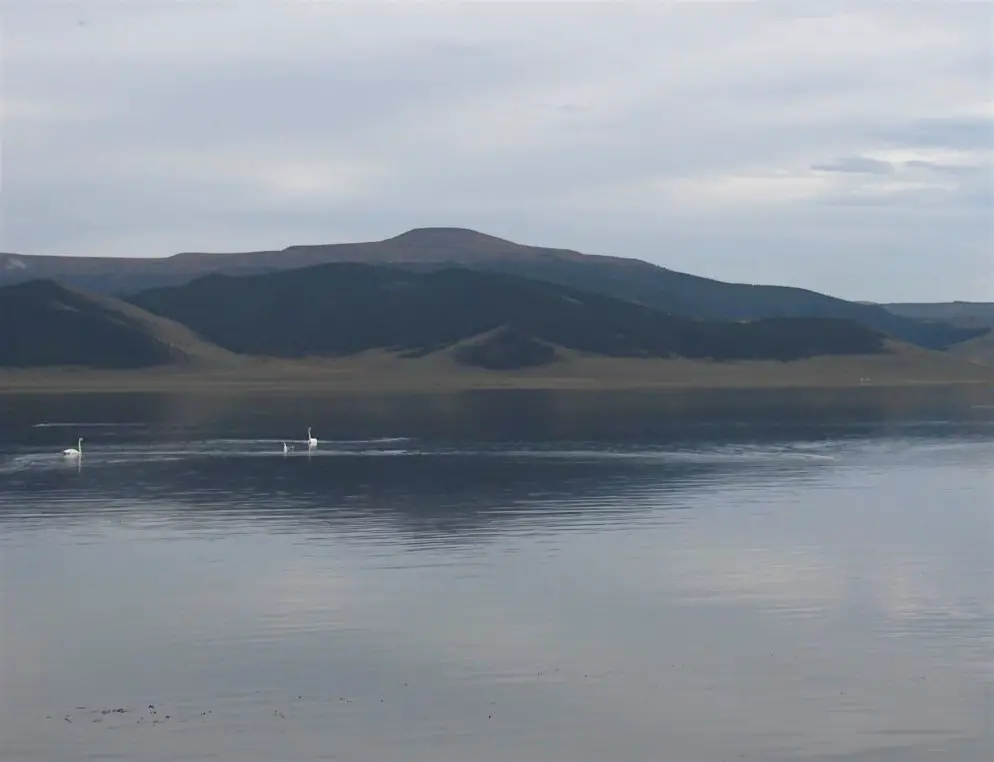
This last point is what interests us most at this point in our discourse, because in the Greek tradition - and, as we shall see, also in the Celtic one - the really lands last, liminal ed extreme which are believed to allow the "traveler" to access a truly sacred dimension other and completely detached from the laws of the space-time continuum are those located in the extreme North [22] and to the far West: in other words, those islands auras, blissful and heavenly of which the Hellenic tradition made god-sovereign respectively Apollo (North: Hyperborea) or the primeval Saturn (West: Ogigia [23]). The reason for the distinction between the golden islands Apollonian, located in the far North, and those saturnias, out of the way to the West, is subtle but not devoid of coherence. Saturn in fact, despite being king of the primordial Golden Age, was ousted and placed in a comatose state of life-in-death up to the turn of the times: therefore the West suits him, where the "Land of the Dead" traditionally stands [24].
Apollo on the contrary has not lost his scepter, and therefore remains sovereign of the sacred land in the far north, and therefore paradigmatically polar ed axial, where the god returns annually in the three winter months, and from whose peak - like the Cakravartin [25] Hindu from the top of Mount Meru [26] and the Norse Óðinn from his solitary throne at Ásgarðr, also called the "Green Island" [27] - silently rules everything that happens in the convulsive storms of the universal manifestation that takes place at his feet, sending his two raven-messengers all over the world; this seems to be the reason why the Pythagoreans called Apollo the "God surveyor" [28]. Empedocles [29]on the other hand, he called Apollo "only one sacred and unspeakable heart [...] that with quick thoughts darting through the whole world "- commented by Colli" inexpressible and hidden interiority, sacred and unspeakable heart, that is the divinity in its metaphysical detachment, [and] at the same time dominating and terrible activity in the world human" [30].
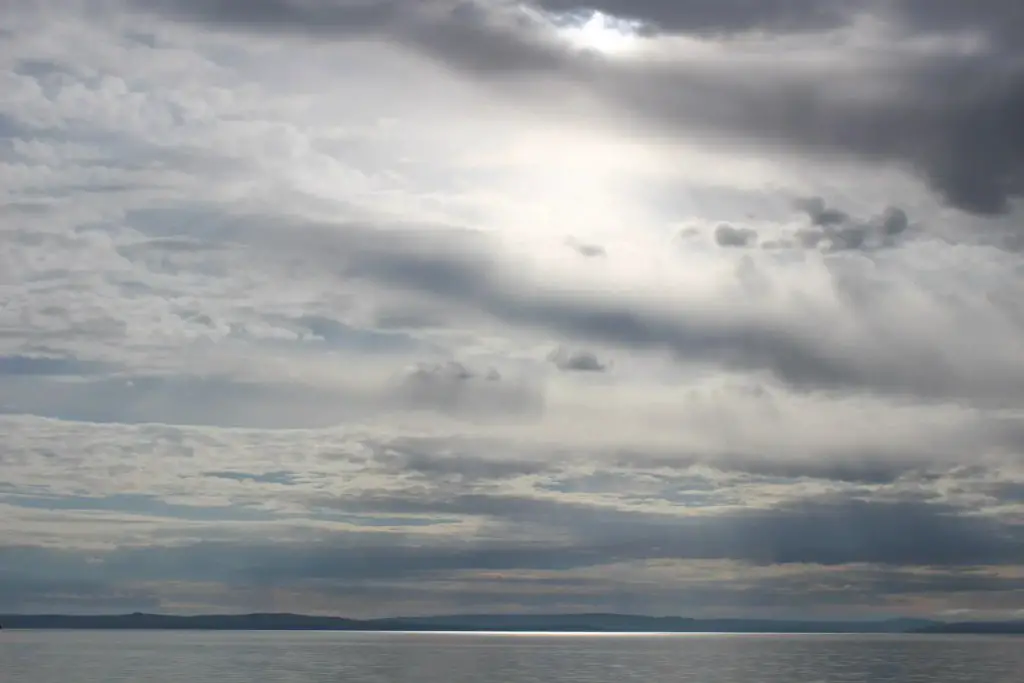
Note:
[1] On the quail in the Apollonian myth, cf. supra, Postal Code. II §5; on the goose cf. supra, Postal Code. Note 37.
[2] Kerényi, Two, cit., pp. 169-170.
[3] Julius Evola, Revolt against the modern world, Mediterranee, Rome 1969, p. II chap. 4-5, pp. 242-260. Evola considers the migration from northern Asia to be more ancient than that coming from the Atlantic Ocean, and yet the opposite seems to be true to us, also taking into account the fact that traditionally the latter is associated with the Atlanteans, which in the Greek myth would be the descendants of Atlas (therefore of the lineage of the Titans) who inhabited the Mediterranean before the Deluge of Deucalion. Note that in the Greek myth, according to what the Library of the Pseudo-Apollodorus, it is Prometheus who advises his son Deucalion to build an ark to save himself from the imminent flood and, as in the Old Testament myth of Noah and in the older one of the Babylonian Utnapishtim, all the rest of this titanic proto-humanity perished except the few who fled to the mountain peaks. The same myths are also told about the Andes; by the way cfr. Marco Maculotti, Antediluvian, giant, "gentle" humanity, on «AxisMundi.blog», 2 May 2017. Nevertheless, the Greek mythical tradition recalls several floods, in order of antiquity: 1) the ugly one, which marked the end of the golden age [cf. infra, §8 & Postal Code. IV §1-3]; 2) that of Atlantis narrated by Plato, which is sometimes confused with; 3) that of Deucalion and Pyrrha; and finally 4) that of Dardano. On the issue cf. Giuseppe Acerbi, The question of the "Three Floods" in the Hellenic tradition, in «Algiza» n. 9, Chiavari (GE), January 1998.
[4] Walter, op. cit., p. 186.
[5] «Since the middle of the second millennium BC the swan has been associated in Scandinavia with solar symbols: numerous graffiti and bronze objects show the solar boat or ship pulled by swans. Such a depiction requires an immediate connection with Apollo. He flies to the country of the Hyperboreans in a chariot pulled by swans, but he is also a god of light. So it can be said that the Scandinavian representations are the equivalent of the Greek myth of Apollo Hyperborean: here Apollo, the pure light, moves on a chariot pulled by swans, there the swans pull the boat on which the Sun rests. [... ] This does not mean that the first origin of the god is to be found among "those who live beyond the north wind", but that this hyperborean origin must be seen in connection with wisdom "[Cinzio Solano, Brief considerations on the Hyperborean swan in Italy, in «Arthos» n. 27-28 / year XII-XIII, "The Arctic tradition", Saluzzo (CN) 1983-1984, p. 46 (106).
[6] See Antonio Bonifacio, The polar way of the swans. The steeds of Apollo between prehistory and Augustan Rome, on «Symmetry» n. 27-28-29-30 (part I-II-II-IV), 2013-2014, I.
[7] Gaston Georgel, The four ages of humanity. Introduction to the cyclical conception of history, the Circle, Rimini 1982, p. 124 & Walter, op. cit., p. 103.
[8] Kerényi, Two, cit., p. 168.
[9] See. infra, ch. III §§3-4, 8-9 & IV §§1-3.
[10] Marine divinities and zoophanies (dolphins) - or rather oceanic ones - often appear in connection with the sacred northern and Far-Atlantic land.
[11] According to the myth, Orizia had several children (collectively called Boreadi or Boreidi), including the females Chione, Emo and Cleopatra and the males Calaide and Zete, all represented with winged feet; the symbolism, it seems to us, is that of flight in the air which recalls that of the "air travelers" iatromancers. Furthermore Plato takes up the myth in Phaedrus, recounting that her sisters were sacrificed so that Athens could win the war against Eleusis, while Orizia was saved because Boreas kidnapped her; thereafter, she suggests that her story was inspired by the death of a young girl precipitated from the rocks by a gust of northern wind. Maybe, but to us the "Platonic suggestion" appears as a not too hidden quote to the Apollonian sacrificial rite of the White Rock of Cape Lefkada, of which we have spoken supra [cfr. Postal Code. I §17].
[12] Kerényi, The gods and heroes ..., cit., vol. II: The Heroes, P. 276.
[13] So called because the hypogeum in which the Mysteries took place [cf. supra, Postal Code. I §1] was located in the suburb of Athens called Agra (cf. ἀγρός = "field", Lat. act), perhaps also connected to the adjective "Apollonian" άργος = "white", "shining", "shining", "shimmering"), etymology that is also found in the city of Argos and in the name of the legendary Argonauts.
[14] Kerényi, Eroi, cit., p. 275. Antonio Bonifacio notes the mythical relationship between the swan, song and light and cites the tradition reported by Luciano da Samosata according to which "the companions of Apollo were men with the gift of singing who, somewhere, had been changed in swans "; to then underline how «approaching the radical sven to Sanskrit vanished which means to whisper, [Jung] comes to the conclusion that the swan song, in German (Schwan), solar bird, is the mythical manifestation of the etymological isomorphism of light and word "[Bonifacio, Polar Way, IV, cit.].
[15] See. supra, Postal Code. I §8, 10.
[16] Kerényi, Eroi, cit., p. 275. The relationship between Apollo and the marine divinities is very clear: just think of Poseidon, of whom he is a faithful ally especially in the foundation rites of fortified cities (the two are "foundation gods" par excellence), or Triton, who plays an "Apollonian" role in the myth of the Argonauts. The latter, among other things, according to Hesiod, dwells in a golden palace in the depths of the ocean: a saturnine characteristic; cf. supra, Postal Code. III §§8-9 & infra, Postal Code. IV §1.
[17] Id., Ibid., P. 276.
[18] Id., Ibid.
[19] Mentioned inEtymologicum Magnum, a lexicon compiled in Constantinople by an unknown lexicographer around 1150.
[20] Kerényi, Eroi, cit., p. 275.
[21] Compare this myth with the Platonic passage according to which «the swans, since they are sacred to Apollo, are soothsayers; and having the vision of the goods of Hades, on the day of their death they sing and rejoice more than in the past "[Plato, Phaedo, 84e-85b.]
[22] "According to Phaedrus, the immortal Souls, now free, reach the top of the celestial vault; there, drawn into the rotating motion of the stars, they contemplate what is outside the sky. An unpredictable […] elsewhere in which dwells that colorless, shapeless and intangible essence that can only be contemplated by the Nοῦς. It is the ultimate substance of being, explicitly [...] located in the "hypercosmic place" by Plato. External, celestial space, but also mental, internal space: the Sun, tangible symbol of Good, supreme Idea and source of being, is also what is found outside the universe, in the "hypercosmic place" described in Phaedrus, a dwelling whose intangibility smacks of the inner world "[Albrile, Sun, cit., pp. 70-71].
[23] See. infra, §8 & Postal Code. IV §1.
[24] See. infra, Postal Code. IV §3.
[25] See. supra, Postal Code. II §12.
[26] See. supra, Postal Code. I §10.
[27] Julius Evola, The mystery of the prehistoric Arctic: Thule, in Id., The "Hyperborean Mystery". Writings on the Indo-Europeans 1934-1970, Quaderni di Testi Evoliani n. 37, Julius Evola Foundation, Rome 2002, p. 30 (orig. Published in "Il Corriere Padano", Ferrara, 13 January 1974).
[28] D'Anna, Virgilio, cit., p. 42.
[29] See. supra, Postal Code. I §4.
[30] Hills, Philosophy, cit., p. 44.

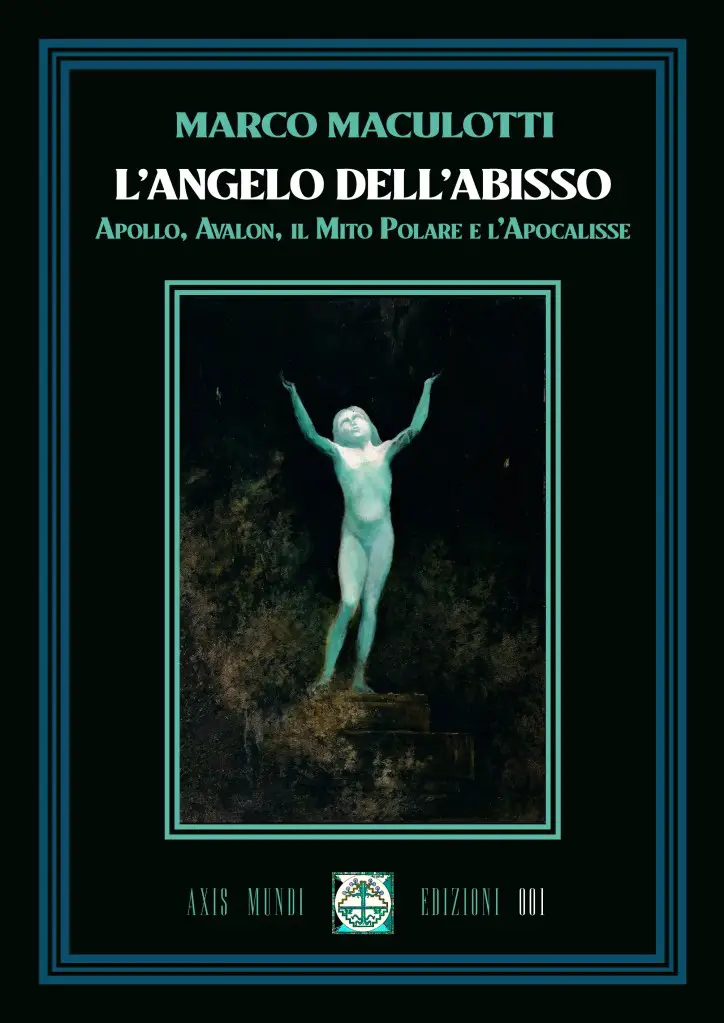
2 comments on “The symbolism of the Swan, the «Hyperborean Thrace» and the Eleusinian connection"